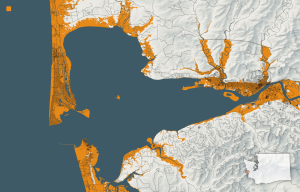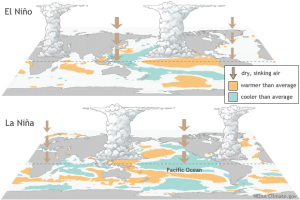
1. A Growing Threat
Tsunamis pose a far greater risk to the U.S. than many realize. The Pacific Northwest, East Coast, and Gulf Coast are all vulnerable to massive waves triggered by earthquakes, landslides, and even rising seas. “They’re more like ticking time bombs waiting to be set off.”
2. Pacific Northwest: The Epicenter
The most dangerous zone lies in Washington, Oregon, and Northern California, where the Cascadia Subduction Zone threatens a massive quake. “There’s a 10–14% chance of another magnitude 9.0+ quake within the next 50 years.” Such an event could send 30–100 foot waves crashing inland within minutes. Signs of past devastation, like “ghost forests,” serve as haunting reminders of the last megaquake in 1700. “Entire communities could sink as the ground suddenly drops several feet.”
3. East and Gulf Coasts at Risk Too
Though less obvious, the East Coast faces serious risk from underwater landslides and distant quakes. The Caribbean fault lines, in particular, are a major concern. “An earthquake there could send lethal waves toward the southeastern U.S., including Florida.” History shows it’s not just theory—Puerto Rico and the Dominican Republic were hit hard in 1918 and 1946, killing over 1,600 people combined. Even the Gulf Coast isn’t immune, though its risks are smaller and often related to storm-triggered waves.
4. Climate and Preparedness
Climate change makes things worse. Rising sea levels mean waves travel farther and cause more damage. “In a warming world, tsunamis become even more destructive.”
1. A Growing Threat
Tsunamis pose a far greater risk to the U.S. than many realize. The Pacific Northwest, East Coast, and Gulf Coast are all vulnerable to massive waves triggered by earthquakes, landslides, and even rising seas. “They’re more like ticking time bombs waiting to be set off.”
2. Pacific Northwest: The Epicenter
The most dangerous zone lies in Washington, Oregon, and Northern California, where the Cascadia Subduction Zone threatens a massive quake. “There’s a 10–14% chance of another magnitude 9.0+ quake within the next 50 years.” Such an event could send 30–100 foot waves crashing inland within minutes. Signs of past devastation, like “ghost forests,” serve as haunting reminders of the last megaquake in 1700. “Entire communities could sink as the ground suddenly drops several feet.”
3. East and Gulf Coasts at Risk Too
Though less obvious, the East Coast faces serious risk from underwater landslides and distant quakes. The Caribbean fault lines, in particular, are a major concern. “An earthquake there could send lethal waves toward the southeastern U.S., including Florida.” History shows it’s not just theory—Puerto Rico and the Dominican Republic were hit hard in 1918 and 1946, killing over 1,600 people combined. Even the Gulf Coast isn’t immune, though its risks are smaller and often related to storm-triggered waves.
4. Climate and Preparedness
Climate change makes things worse. Rising sea levels mean waves travel farther and cause more damage. “In a warming world, tsunamis become even more destructive.”



